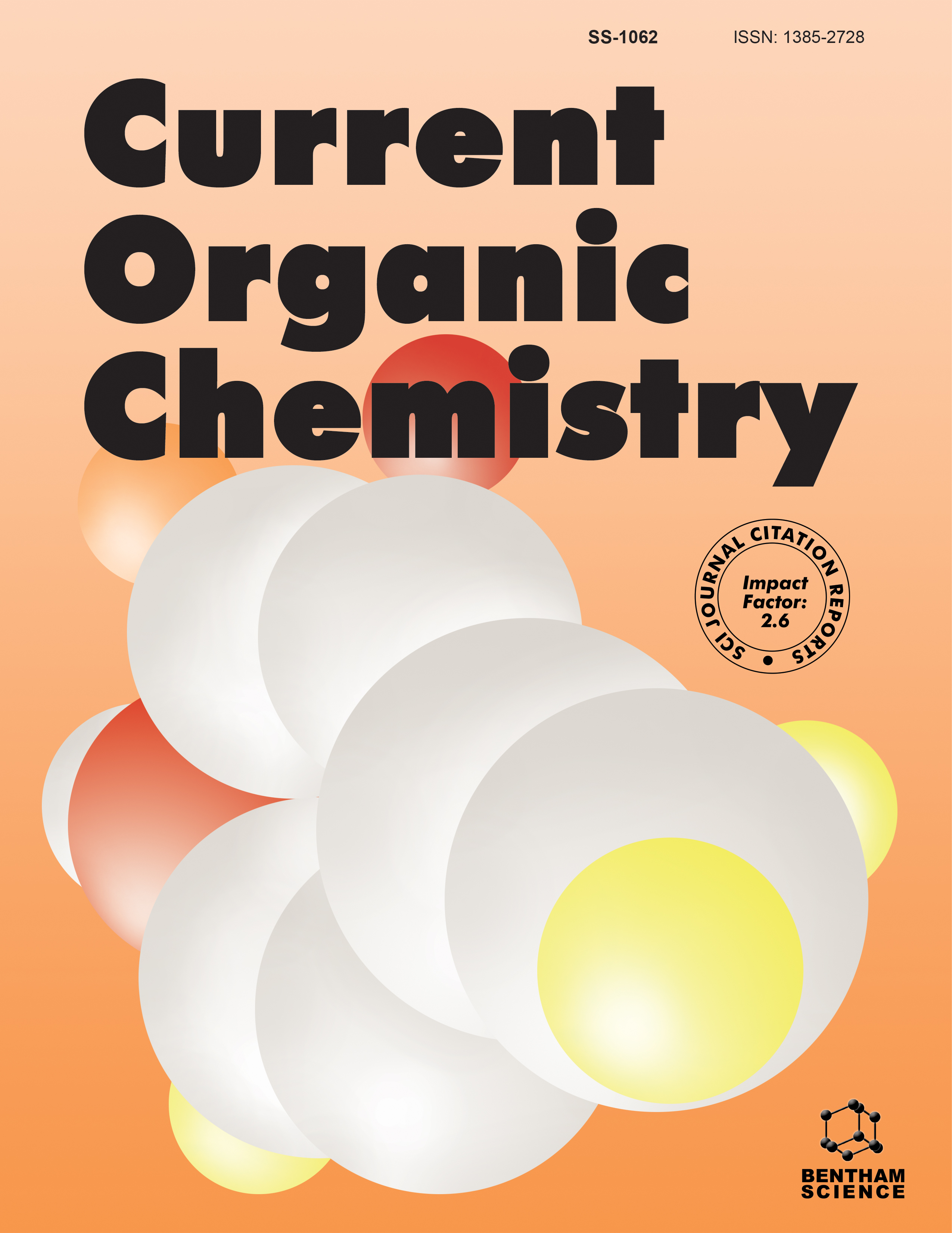- Home
- A-Z Publications
- Current Organic Chemistry
- Previous Issues
- Volume 19, Issue 7, 2015
Current Organic Chemistry - Volume 19, Issue 7, 2015
Volume 19, Issue 7, 2015
-
-
Applications of Metal-Free 1,2,4-Triazole Derivatives in Materials Science
More LessAuthors: Angel Diaz-Ortiz, Pilar Prieto, Jose R. Carrillo, Raul Martin and Ivan TorresThe 1,2,4-triazole system has shown excellent electron-transport and hole-blocking properties owing to its highly electron-deficient nature. Accordingly, a large number of 1,2,4-triazole derivatives have been described as having a wide variety of uses in materials science. Triazoles are widely used in transition-metal complexes or metal-organic frameworks (MOFs), but metal-free 1,2,4-triazole derivatives have also exhib Read More
-
-
-
Catalytic, Green and Regioselective Friedel-Crafts Acylation of Simple Aromatics and Heterocycles Over Zeolites
More LessAuthors: Gamal A. El-Hiti, Keith Smith and Amany S. HegazyTraditional Friedel-Crafts acylation reactions of aromatics suffer from low regio-selectivity towards para- or more linear isomers and usually require stoichiometric quantities of Lewis acids, which are hydrolysed to produce toxic waste during aqueous work-up. Zeolites can catalyse and enhance the selectivity in Friedel-Crafts acylation reactions of simple aromatics and heterocycles. For example, high regioselectivity was achieved Read More
-
-
-
Covalently Linked Free-Base and Metallo-Bis-Porphyrins: Chemistry and Diversity
More LessAuthors: Mohmmad Younus Wani, Avula Balakrishna, Santosh Kumar and Abilio J.F.N SobralPorphyrins are important macrocyclic compounds that exist in nature, particularly in their metallated forms. Their unique properties have led the chemical community, since the earliest studies, to embrace the challenge of synthesizing porphyrins. In the quest to produce and manipulate the periphery of these macrocyclic systems for more useful and versatile applications, various strategies have been implemented. Among t Read More
-
-
-
Optical Properties of Single-Walled Carbon Nanotubes Functionalized with Poly(2,2’-bithiophene-co-pyrene) Copolymer
More LessAuthors: Ion Smaranda, Mihaela Baibarac, Mirela Ilie, Adelina Matea, Ioan Baltog and Serge LefrantThe photoluminescent (PL) properties of composites based on single-walled carbon nanotubes (SWNTs) and poly(2,2´-bithiophene-co-pyrene) (PBTh-Py), prepared by in situ chemical polymerization of the two monomers in the presence of carbon nanotubes, are reported. We demonstrate that the functionalization of SWNTs with PBTh-Py copolymer is revealed through a gradual quenching process of PL with the increase of Read More
-
Volumes & issues
-
Volume 29 (2025)
-
Volume 28 (2024)
-
Volume 27 (2023)
-
Volume 26 (2022)
-
Volume 25 (2021)
-
Volume 24 (2020)
-
Volume 23 (2019)
-
Volume 22 (2018)
-
Volume 21 (2017)
-
Volume 20 (2016)
-
Volume 19 (2015)
-
Volume 18 (2014)
-
Volume 17 (2013)
-
Volume 16 (2012)
-
Volume 15 (2011)
-
Volume 14 (2010)
-
Volume 13 (2009)
-
Volume 12 (2008)
-
Volume 11 (2007)
-
Volume 10 (2006)
-
Volume 9 (2005)
-
Volume 8 (2004)
-
Volume 7 (2003)
-
Volume 6 (2002)
-
Volume 5 (2001)
-
Volume 4 (2000)
Most Read This Month
Article
content/journals/coc
Journal
10
5
false
en


